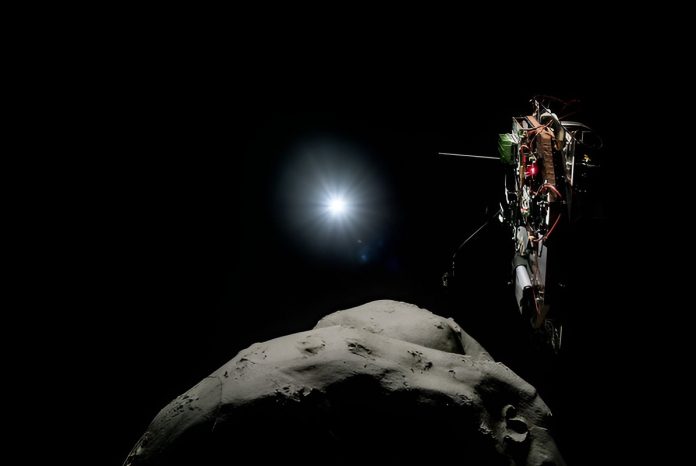
Space may seem like a vast emptiness, but in reality, it’s filled with countless objects that can pose dangers to spacecraft.
Imagine spending years designing a multibillion-dollar autonomous spacecraft, only to have it lose a thruster and crash into an asteroid.
To prevent such scenarios, scientists at Caltech, in collaboration with NASA’s Jet Propulsion Laboratory (JPL), have developed new algorithms that could make autonomous spacecraft safer and more efficient.
Historically, spacecraft engineers have relied on two main methods to handle equipment failures: “safe mode,” where the spacecraft minimizes operations until human operators can diagnose the problem, and redundant systems, which allow a spacecraft to switch to backup equipment if something fails.
However, these solutions can be slow or expensive, especially when immediate responses are required.
To address this, a team led by Soon-Jo Chung, Bren Professor of Control and Dynamical Systems at Caltech, has created a new algorithm called s-FEAST (Safe Fault Estimation via Active Sensing Tree Search).
This algorithm allows autonomous spacecraft to quickly diagnose problems and take corrective actions in real time, without needing to rely on redundant systems or waiting for instructions from Earth.
The s-FEAST algorithm was tested in Chung’s lab using a sophisticated simulator that mimics the conditions of space. The simulator allows model spacecraft to move across a flat floor with almost no friction, similar to how objects move in space.
James Ragan, a Ph.D. student at Caltech and the lead author of the study, explains that s-FEAST enables the spacecraft to “dream” about various possible futures and choose the safest course of action.
When a spacecraft detects something unexpected, s-FEAST runs test actions to figure out what went wrong and how to avoid further problems. It’s like how you might carefully test a sore muscle to see what hurts and avoid making it worse. The algorithm quickly spins out different possible scenarios, analyzes them, and picks the safest option.
Ragan emphasizes that s-FEAST isn’t meant to replace all spacecraft operations but serves as an emergency response system.
When something goes wrong, s-FEAST takes over, assesses the situation, and makes quick decisions to protect the spacecraft. Once the issue is resolved, control is handed back to the spacecraft’s regular systems.
The team also tested the s-FEAST algorithm on a ground vehicle, and the results were successful. This suggests that the technology could be useful not only in space but also for autonomous vehicles on Earth.
Chung and his team believe that s-FEAST could make space exploration safer and more cost-effective by reducing the need for expensive redundant systems.
They envision that this new approach will help spacecraft and other autonomous vehicles operate more reliably in the future. The research has been published in the journal Science Robotics.
The success of s-FEAST marks an important step forward in ensuring the safety and efficiency of autonomous spacecraft, paving the way for more ambitious space missions.



